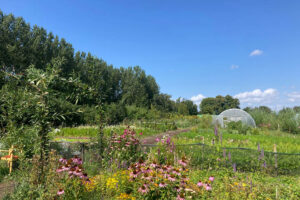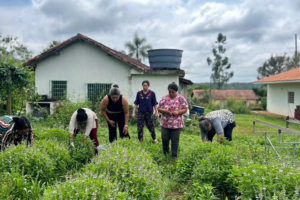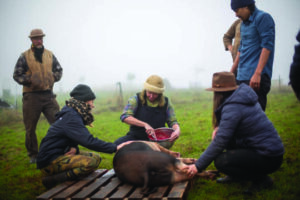ASAPP collaborates with farmers across Europe, South America, Oceania, Southeast Asia, and Eastern Africa to explore specific practices that align with the 13 Principles of Agroecology. Using a case study approach, we are examining how these practices vary across regions and how they address local challenges.
Data is collected through a survey based on the Agroecology Assessment Framework, developed by the Agroecology Coalition. This framework allows us to systematically assess how each of the 13 Principles of Agroecology are met in different contexts, following predefined categories and examples. We ask farmers to self-assess their degree of alignment with each of the 13 Principles of Agroecology, their so called “agroecologicalness” or degree of agroecological integration. Each principle is rated on a scale from 1 to 5, with 1 indicating no alignment and 5 indicating a strong alignment.
The findings are then distilled into visual-centric leaflets, following a principle-by-principle structure, to clearly demonstrate how agroecology can be applied on farms worldwide. Photographic work is central to this initiative, providing a visual repository of agroecological practices.
By making these case studies easy to understand and replicate, ASAPP provides farmers and agricultural advisors with practical insights and actionable steps for adopting agroecological practices tailored to their specific needs. In doing so, we also enrich the Agroecology Assessment Framework by documenting previously unrecorded practices and amplifying farmers’ voices in discussions about effective agroecological strategies across agricultural regions.
The broader impact of ASAPP
Demonstrating alignment between on-the-ground practices and the 13 Principles of Agroecology is essential for attracting future support. Donors and funding organisations focused on sustainable agriculture are increasingly looking for evidence of successful agroecological transitions. ASAPP’s findings will contribute to reinforcing this evidence, helping to secure the funding and resources needed to expand these practices and foster long-term change.



